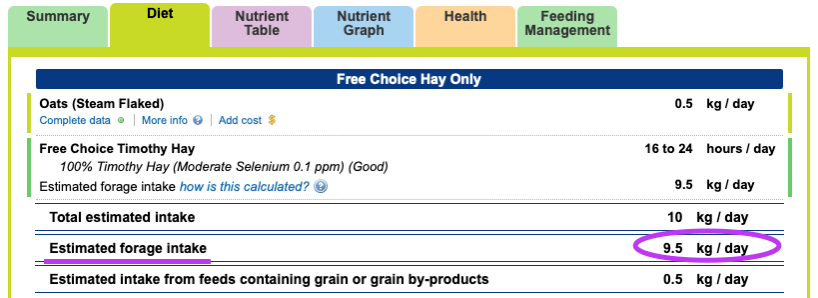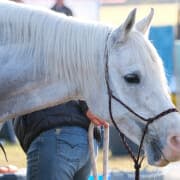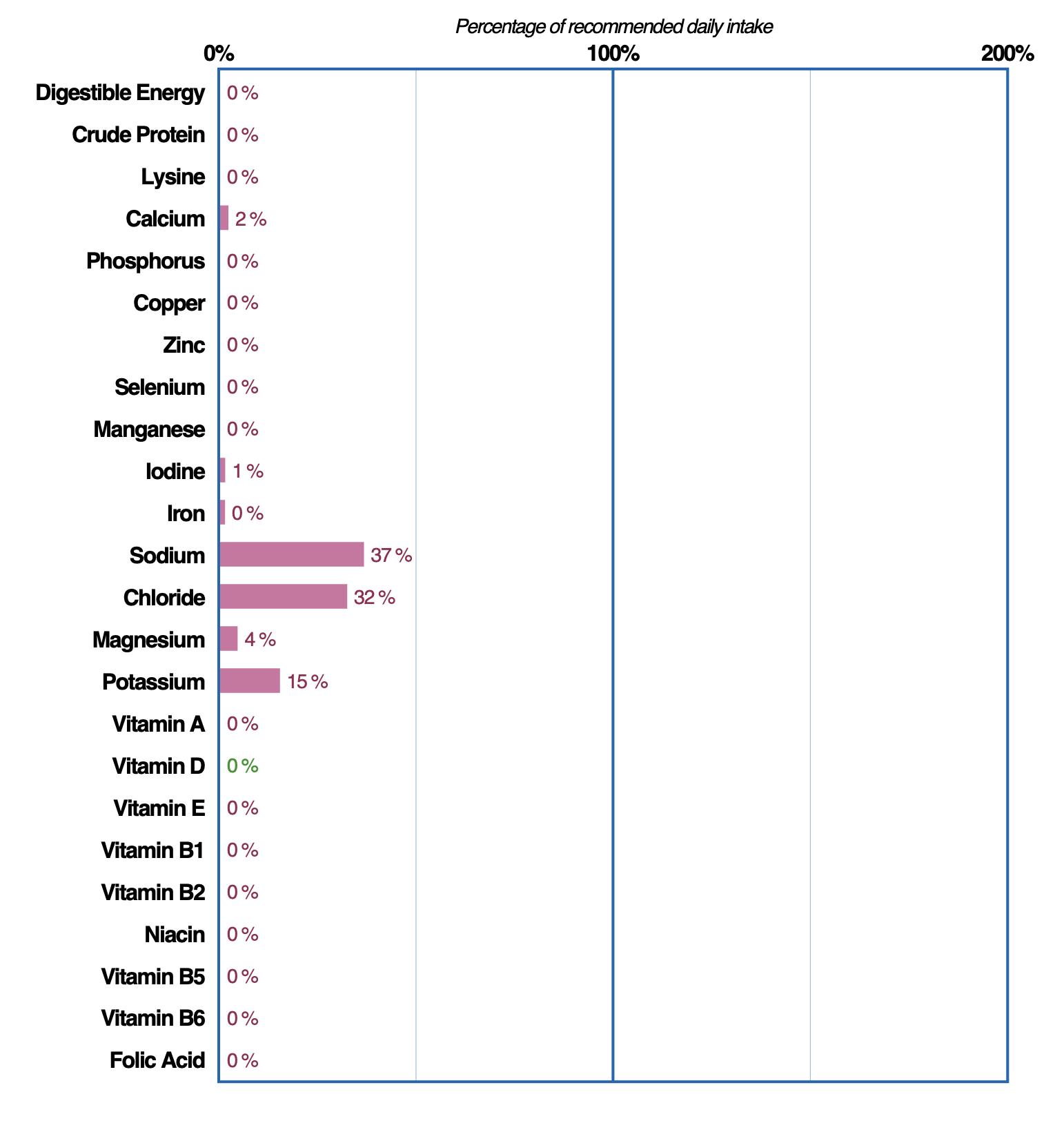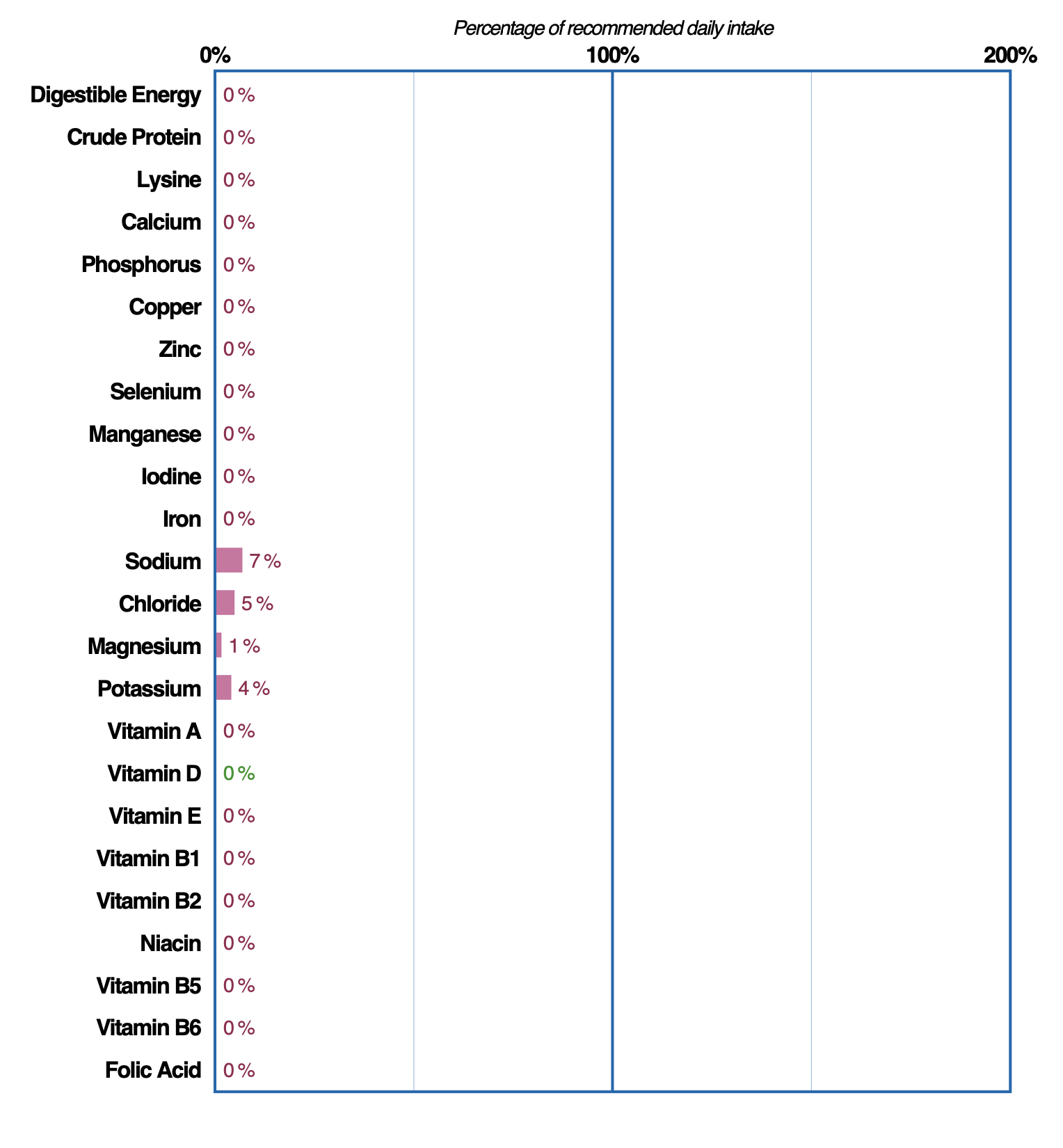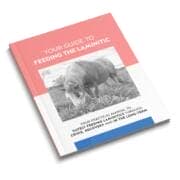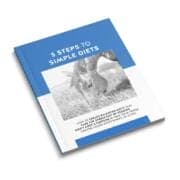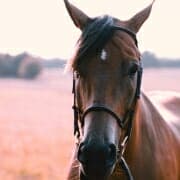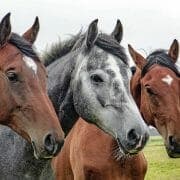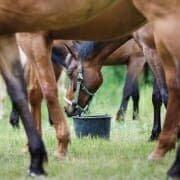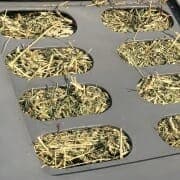How to Know if You Are Underfeeding or Overfeeding Your Horse (& What to Do About It)
Let’s take a look at two common mistakes horse owners make: underfeeding and overfeeding.
Underfeeding can lead to health and performance issues because certain nutrients are not being met.
Overfeeding is where you are supplying more than you need of multiple nutrients. At best, overfeeding is a WASTE OF MONEY! At worst, it will cause nutrient toxicity and can make your horse very sick!
Underfeeding
One of the most important reasons you use a tool like FeedXL is to identify and correct nutrient deficiencies in the diet that result from ‘underfeeding’.
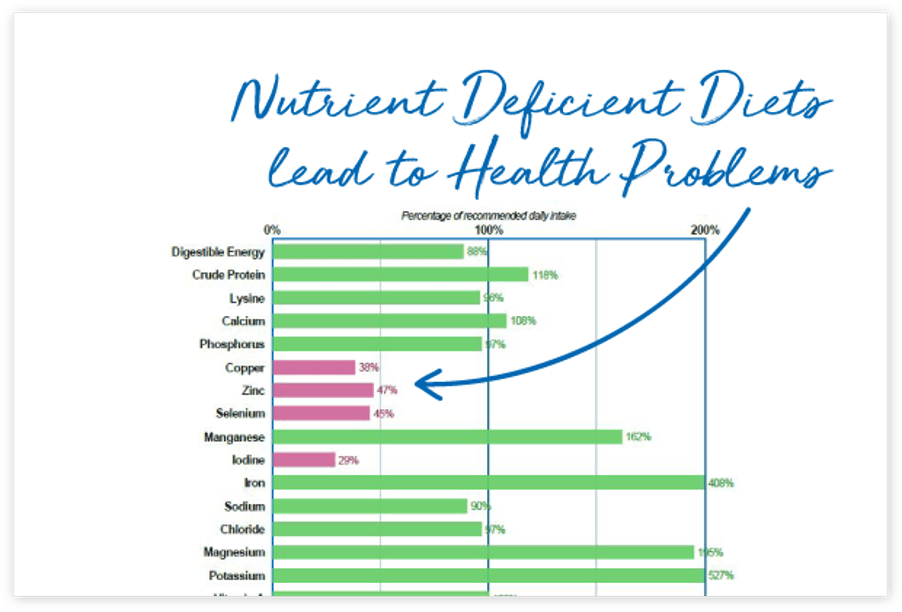
Common mineral deficiencies include copper, zinc, selenium and iodine while common vitamin deficiencies include vitamin E and vitamin B1.
These deficiencies can have pretty dramatic long-term consequences for your horse including slow wound repair, gastrointestinal damage, poor immune response, hooves and joints that fall apart, muscle damage, especially during exercise, poor behaviour, muscle wastage and weight loss.
If the deficiencies are severe, diseases like severe neuromuscular disorders can occur.
It’s REALLY important to meet your horse’s needs for all of these nutrients! So we are really glad you are here.
Your first task with FeedXL should be to assess your horse’s current diet.
To do this, simply enter you horse with as accurate information as possible.
Once your horse is entered, choose or enter your pasture or free choice hay (and if you get stuck at this step be sure to jump on live chat and ask us for help!).
Then, enter your horse’s feeds and supplements as accurately as possible… we highly recommend grabbing yourself a small set of scales to weigh any feeds and supplements. Plus a set of luggage scales to weigh your hay!
Next, you go to the results page and here you will see which of your horse’s requirements are met and which are not!
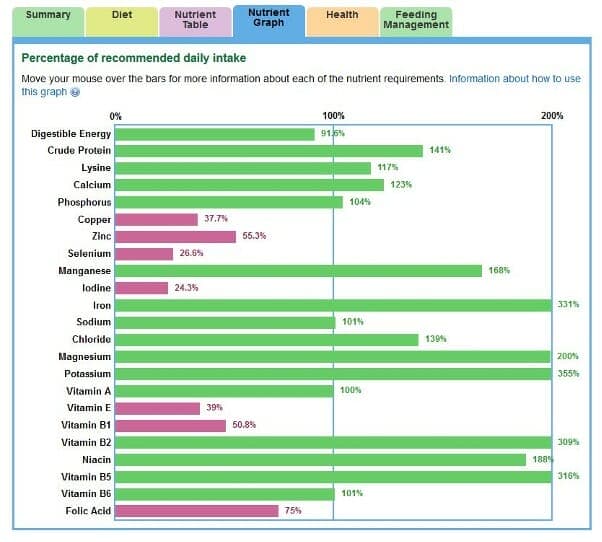
And at this point it is interesting to ponder whether any issues you may have been having with your horse are due to any of the deficiencies you may have found.
You might also like to head over to our FeedXL Horse Nutrition Facebook Group and discuss what you found with your fellow members!
If You Are Underfeeding…
First, if you are underfeeding, you can try increasing the amounts of the feeds or supplements you are already using in the diet. If you increase them, does this fill all the gaps in your horse’s diet?
But keep in mind if you increase a feed too much you may just make your horse fat, which means this isn’t a good option… what works in this situation? It’s best to add a supplement or balancer pellet.
It is so worth the effort to find these deficiencies in your horse’s diet because they could explain a lot about your horse’s health, appearance and behaviour!
Next, let’s look at overfeeding…
Overfeeding
Overfeeding is where you are supplying more than you need of multiple nutrients.
It usually happens when you add supplements on top of feeds on top of supplements! It’s how we feed when we are ‘unsure’ if we are giving our horses everything they need!
At best, overfeeding is a WASTE OF MONEY!
At worst, it will cause nutrient toxicity and can make your horse very sick!
How to Spot Nutrient Excesses
So in the same process as we went through before, if you haven’t already, enter your horse’s current diet and look for any nutrient excesses. (Log in here or sign up if you’re not yet a member).
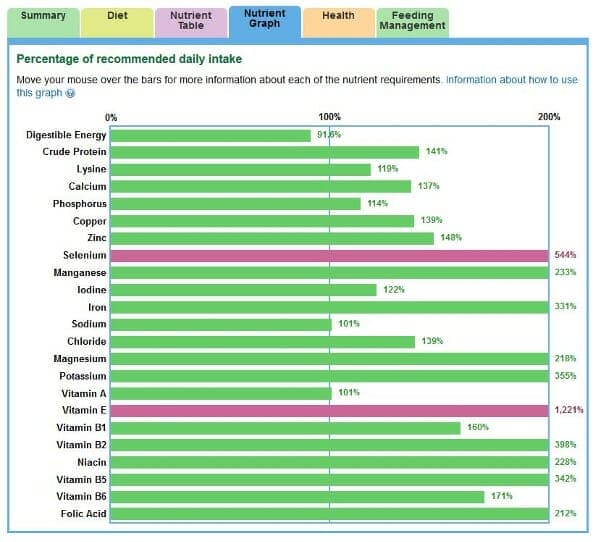
Are you feeding well above what your horse needs for some nutrients, are there any nutrient toxicities, could you reduce some of the feed or supplement amounts to reduce these excesses?
If you are not sure where it is best to have some nutrient levels and what is ‘normal’ (because you will never get a diet where everything sits at 100%), I highly recommend reading this article: ‘Do you need to get every nutrient to 100% on the FeedXL graph?‘.
One of the most common pieces of feedback we get from our members centres around saving money by not overfeeding.
If you are overfeeding…
If you are overfeeding, try reducing the amount of the feeds and/or supplements in the diet. If you decrease them, can you bring the levels of nutrients down to where they should be (and again if you’re not sure, refer to ‘Do you need to get every nutrient to 100% on the FeedXL graph?‘) WITHOUT creating any nutrient deficiencies.
If neither of those options work, you can try a couple of things.
You could add another feed or supplement on top of the ones you already have to fill in the gaps.
In some cases this is a good option. For example, your diet may be a little low on vitamin E… it is very easy to just add a vitamin E supplement (you can find these in the blue ‘Balancers and Supplements’ tab under ‘Antioxidants’).
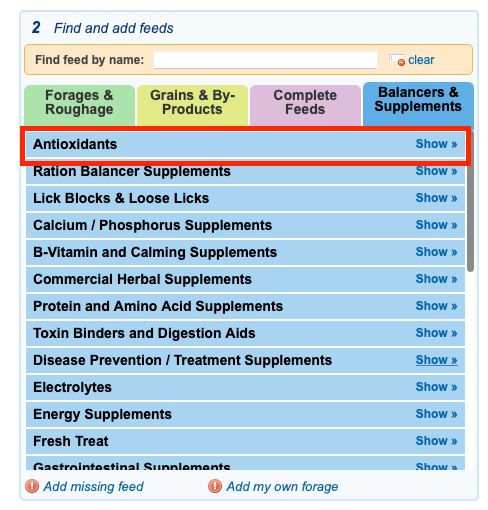
But in a lot of cases adding a second feed or supplement may not be the best option.
For example if you are already using a vitamin & mineral supplement but still have deficiencies in the diet, it is a waste of money using this ‘unbalanced supplement’ and fixing it with still more supplements.
If this is your situation, I would suggest taking the unbalanced supplement OUT of the diet and completely and replacing it with a more balanced one, so that you can use one product.
It’s just a matter of finding the perfect supplement to balance your horse’s diet!
How to Find Supplements To Fix a Diet
By far the easiest way to do this is by using our ‘Find Supplements to Fix this Diet’ button. When you click this button, FeedXL will sort through EVERY ONE of the thousands of supplements in its database and find the best ones to fit your horse’s diet.
Check out how the supplement finder works here.
It is so worth doing the work on your horse’s diet, because you can improve your horse’s health, appearance and performance PLUS save yourself some money.
Go spend some time seeing if you can reduce or even remove some products from your horse’s diet and still keep it balanced!
Note: If you are still on the BASIC plan in FeedXL you will discover that this feature is not available on our Basic plan… upgrade for access to the supplement finder (definitely your best option as these tools supercharge how useful and easy to use FeedXL is!).
You can also head over to our FeedXL Horse Nutrition Facebook Group and ask your fellow members for recommendations for supplements that have balanced diets similar to yours. Be sure to give them some basic details of your horse and diet (screen shots from FeedXL work well) AND also your location in the world so the recommendations are relevant 😊.
Of course then you should put them into your diet to check how well they work with yours.
How to Find Feeds to Fix a Diet
If you are using a feed that is not balanced the same process applies, you can use the ‘Find Feeds to Fix this Diet’ button (check it out here) OR you can ask for recommendations from your fellow members!
And remember if you are really stuck we are here to help! For quick questions you can catch us via email (support@feedxl.com) or live chat (look for the icon in the bottom right of FeedXL when you are logged in).
Need Extra Help?
If you’d like more detailed help, you can book a one-on-one consult with one of our team of nutritionists!
This may sound and feel a bit overwhelming, but just take your time, ask us lots of questions when you need to and lean on your fellow members and we will have you balancing diets superfast in no time!!
Do you have a question or comment? Do you need help with feeding?
We would love to welcome you to our FeedXL Horse Nutrition Facebook Group. Ask questions and have them answered by PhD and Masters qualified equine nutritionists and spend time with like-minded horse owners. It’s free!
Click here to join the FeedXL Horse Nutrition Facebook Group
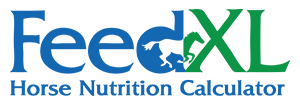
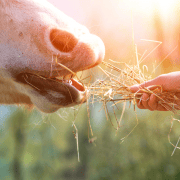

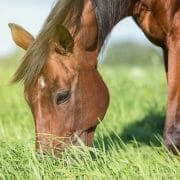
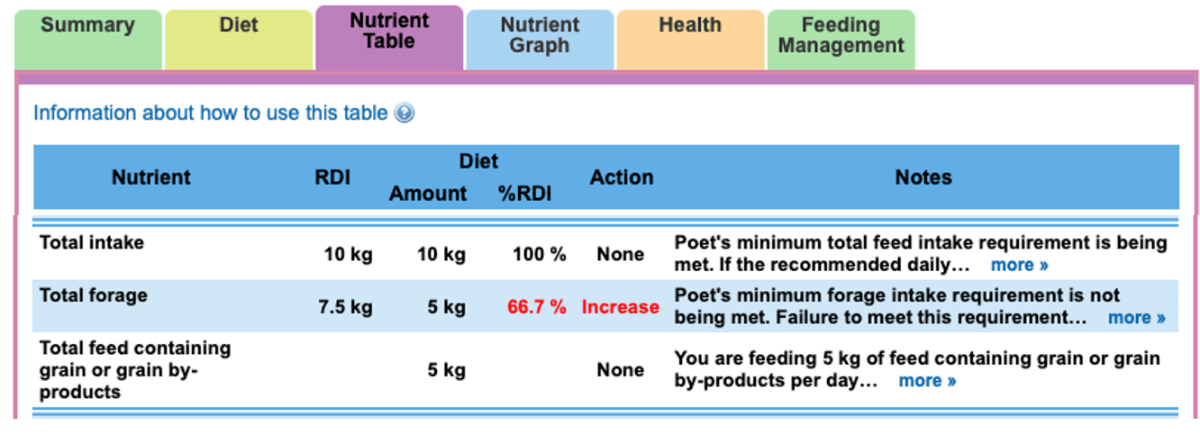 So be sure to meet the minimum daily forage requirement! Then our very best advice is, don’t stop there!
So be sure to meet the minimum daily forage requirement! Then our very best advice is, don’t stop there!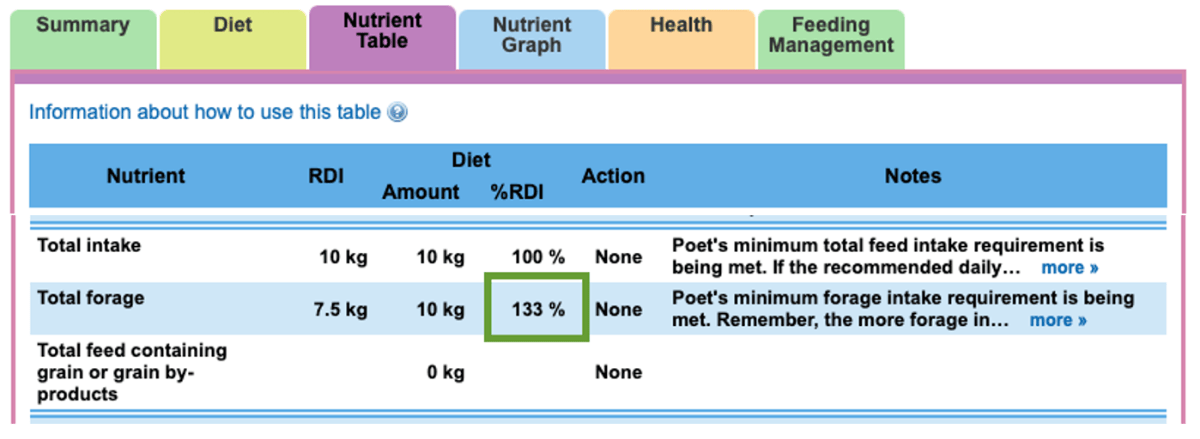 If it is at 100% or above (extra stars for above!), look at your horse’s nutrient graph, looking specifically at the Digestible energy level. Is it between 90 and 100%?
If it is at 100% or above (extra stars for above!), look at your horse’s nutrient graph, looking specifically at the Digestible energy level. Is it between 90 and 100%?  If it is, and ALL you have in the diet is FORAGE this means forage can be used to meet 100% of your horse’s daily Digestible Energy (calorie) requirements and you are unlikely to need a feed!
If it is, and ALL you have in the diet is FORAGE this means forage can be used to meet 100% of your horse’s daily Digestible Energy (calorie) requirements and you are unlikely to need a feed! 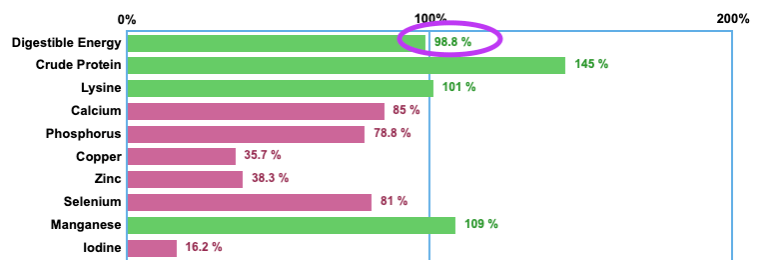 (You will however still need to add a supplement to top up mineral and some vitamin levels and may need to add some high quality protein –
(You will however still need to add a supplement to top up mineral and some vitamin levels and may need to add some high quality protein –  And then you add 0.5 kg/day of oats, free choice forage will go down to 9.5 kg/day…
And then you add 0.5 kg/day of oats, free choice forage will go down to 9.5 kg/day… 